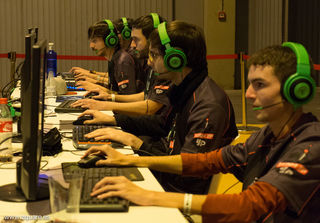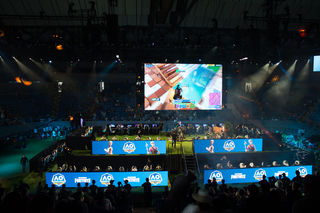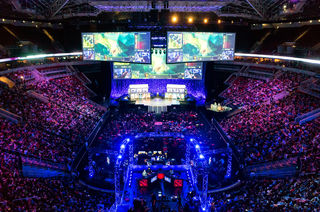Career
How to Help Your Child Become a Professional Gamer
Learn how video gaming has become great preparation for the future of work.
Posted February 24, 2020 Reviewed by Ekua Hagan

If you feel as if your child is wasting his time and mind in front of a screen, you’re not alone. Excessive screen time is considered to be the foremost health problem among parents in many first world countries.
However, the vast majority of kids who spend too much of their time with screens are not experiencing medical or psychological health issues due to playing video games or engaging with social media. Instead, a larger concern is that screens take away from other interests and interfere with having a healthy and balanced Play Diet that includes physical, social, creative, and unstructured activities. In addition, many parents are worried that their kids are engaged in an activity that doesn't prepare them for the future of work. Meanwhile, millions of kids harbor the hope of becoming a professional video gamer.
But what if we “old folks” are wrong? An article in the New York Times Magazine on February 23, 2020, devoted to the future of work suggests that video gamers may be well suited for future employment. The article, "How to Make Billions in E-Sports," describes the path for becoming a successful and wealthy gamer. This remains highly unlikely—think about it in terms of becoming a professional athlete. However, the future of the e-sports industry and the opportunity for jobs within it are burgeoning.
Most of us, including kids, think of people who earn a living in e-sports as the pros who play in competitive e-sports leagues or have a huge following on YouTube or Twitch. Professionals in e-sports can be divided into two categories: competitive pros who play on an e-sports team or lifestyle gamers.
Competitive professionals at the highest levels can earn millions through their play, endorsements, and ancillary opportunities. For example, Kyle Giersdorf, the 16-year-old who won $3,000,00 at the Fortnite World Cup, has his own management company. Competitive pros are best thought of as pro athletes competing on teams the way teams compete in professional sports. Becoming a top professional involves coaching, training, and hours and hours of daily scrimmaging. It also involves natural talent, such as quick reflexes, fast processing speed, the ability to process multiple layers of information, good decision-making, vision, and more.

Lifestyle gamers, in contrast, are entertainers who use YouTube and Twitch and build fan bases. For example, Tyler Levens, better known as Ninja, became well known on Twitch, where he had more than 22,000,000 subscribers watching live action and videos of his Fortnite play. He was previously a professional Halo player who has mastered many of the marketing techniques that expand his reach far beyond gameplay. The most successful streamers can earn several million dollars per year, and while they have to be good at the games, they do not necessarily have to be elite players. They are essentially performers who need to be compelling to their audience, funny, edgy, skillful, and relatable. Kids report that many of their favorite YouTubers and gamers are people they’d like to hang out with as friends. Lifestyle gamers are often thought of as role models by kids who watch them on YouTube. They earn money through ads on their site, merchandising ("merch"), sponsorship, and creating a brand. Lifestyle gamers are major influencers to their millions of followers.
If your child is convinced that he will become a successful e-sports professional in either of these areas, he is probably wrong. Until recently, the chances of becoming a successful competitive e-sports pro were about 1 in 10,000, less than those of becoming a professional football player. Becoming a celebrity lifestyle gamer is also rare at the highest levels. The odds will get better as gaming becomes more popular and new leagues and events are developed, but the future of a career in e-sports is in the broader industry.
The parallels to jobs in professional stick and ball sports are just the beginning: The number of game players and viewers of e-sports makes traditional sports look like the little league. One estimate reports that there are 2.3 billion gamers worldwide, while another predicts a total audience for e-sports events at 645 million people by 2022. Live events, pay-per-view networks, and live streaming draw millions of viewers, and all of these require teams of employees to produce. While only a decade ago kids who loved video gaming were limited to dreaming about becoming a video-game designer or tester, the opportunities are mushrooming.

The growth and legitimacy of e-sports can also be seen in education. Colleges have begun offering degree programs in e-sports. Scholarships for top players are now common, as more than 170 colleges and universities are sponsoring e-sports teams. Patrick Ocampo, Director of Membership Sales and Services at the National Association of Collegiate Esports (NACE), describes e-sports as a career path for students interested in computer science, business, graphic design, and writing. He noted that a recent perusal of e-sports jobs listed on Indeed.com included positions in media, writing, marketing, management, broadcasting, human resources, and announcing. Roles such as coaches, managers, player agents, social media experts, and event directors are already needed.
Maybe all of these kids playing Fortnite 6, 8, or 10 hours per day know something we don’t know—or at the very least are getting into an industry that is growing. However, this doesn’t make spending 10 hours a day on video games OK. It might be best to think about excessive gameplay in terms of children who are obsessed with getting better at a sport such as basketball or spending hours listening to, writing, and practicing music. While becoming a highly paid professional performer in either of these pursuits is very unlikely, a child’s interest and willingness to work hard at getting better at something could be applied to other areas of their lives and may form a lifelong interest.
Video games as an area of obsessive interest present some unique concerns. This is a relatively new activity for parents to monitor, and the built-in addictive nature of the games takes kids away from other healthy activities. However, if we could read the tea leaves of the future, a fascination with gaming and e-sports may be a good path for job preparation. The key for parents is to expect and support a variety of other interests while understanding their child’s fascination with e-sports. This balance is difficult to achieve, and I will address this in my ongoing series on e-sports.




